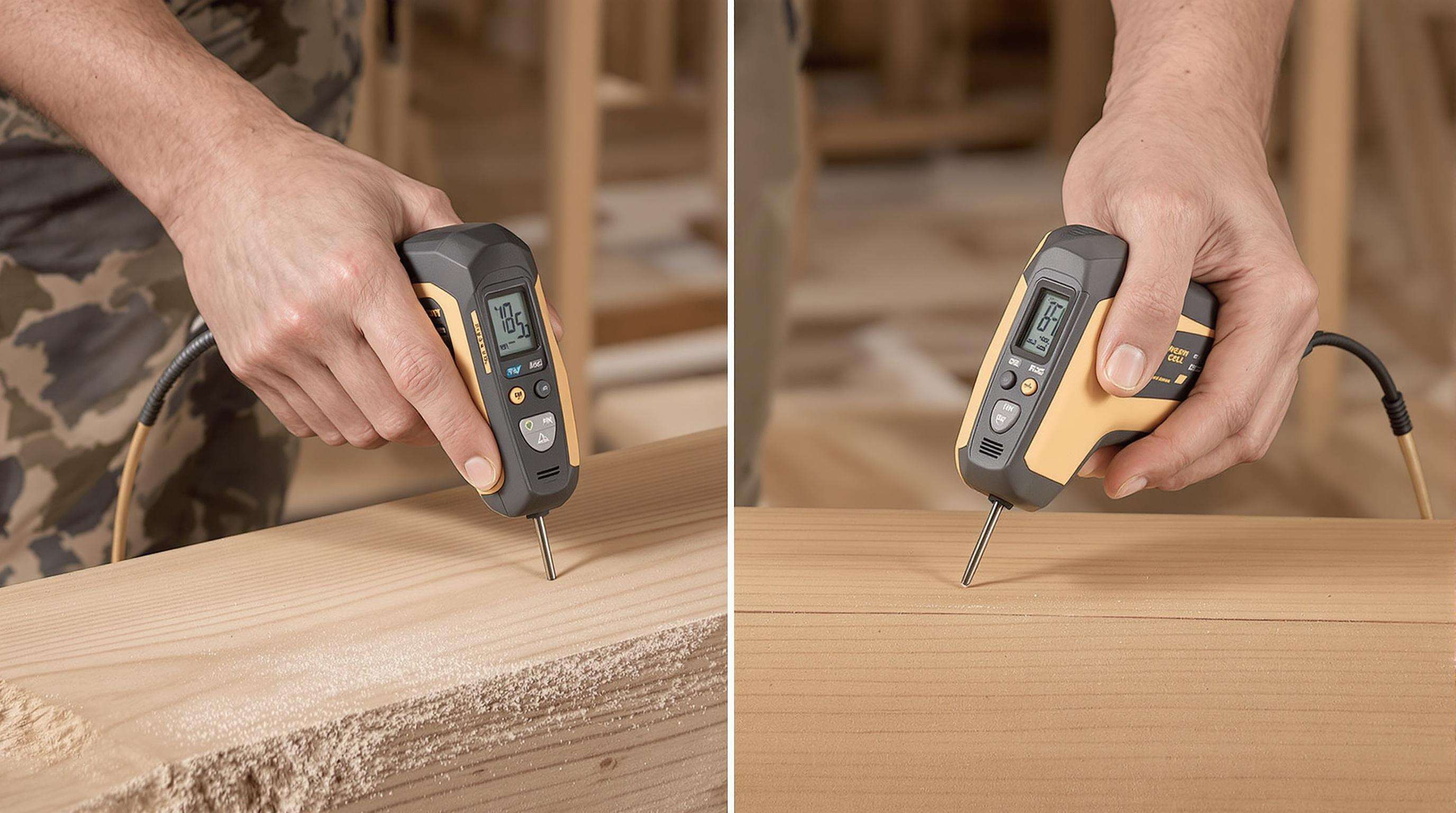The energy required to mill timber into a form usable for construction or renovation is directly related to the moisture content (MC) of the timber. Currently MC is specified in terms of water weight per unit dry wood mass, e.g. most structural timber has to be dried down to 8–14% moisture content for dimensional stability. Newer moisture detector systems rationalize drying speed and conserve energy to a tune of $1.2B wasted in annual improper drying (Forest Products Laboratory 2023).
Fresh sawn lumber with 25–200% MC can take up to 40% more energy for drying than lumber at the equilibrium moisture content of its environment. Drying oak from 30% to 12% MC in kilns will take about 580 kWh/m³, more than tripling the energy used for pre-seasoned lumber. High MC increases drying cycles by 15-25 days as wetter wood requires beginning temperatures be lowered to prevent case-hardening. Operators use the real-time moisture detector data to fine tune heat and airflow, decreasing their risks of over-drying by 37 percent (Purdue University 2022).

Three variables govern drying efficiency:
Optimizing these factors with moisture detector feedback can reduce energy use by 18–22% in kiln operations.
Moisture migrates from wood’s core to surface through capillary action and vapor diffusion. Hardwoods like maple dry 50% slower than softwoods due to closed-cell structures trapping moisture. Monitoring subsurface MC gradients helps systems target heating zones—a technique that improved drying uniformity by 41% in pilot projects (USDA 2023).
Modern moisture detectors enable continuous tracking of wood’s interaction with ambient conditions. Maintaining optimal temperature (±2°C) and relative humidity (±5% RH) ranges reduces kiln energy use by up to 18% compared to fixed drying schedules (Sustainable Materials Processing Journal 2023).
The latest devices combine multi-point sensing with predictive algorithms, automatically compensating for seasonal humidity fluctuations. Detectors placed at varying depths in lumber stacks identify trapped moisture pockets that conventional sensors miss—critical for high-value renovation projects.
Wireless data loggers provide insights into hidden moisture dynamics in retrofit applications. A single logger can capture 500,000+ data points over 5 years, revealing:
During a 2022 Chicago adaptive reuse project, data loggers showed traditional air-drying extended moisture equalization by 34 days compared to controlled dehumidification.

| Factor | Pin-Type Detectors | Pinless Detectors |
|---|---|---|
| Measurement Depth | 0.5–2" (adjustable) | Fixed 0.25–0.75" |
| Surface Sensitivity | Requires clean contact | Tolerates minor debris |
| Calibration Needs | Weekly verification | Monthly verification |
| Best For | Hardwoods, thick slabs | Finished surfaces |
Field tests showed pin-type detectors achieve ±0.5% MC accuracy in dense hardwoods, while pinless models maintain ±1.2% accuracy in drywall. Temperatures above 40°C reduce both types' reliability by 15–20%.
Moisture detectors have evolved from manual analog gauges to IoT-connected systems that reduce human error by 72% in kiln operations (Wood Science Journal 2021). Modern dielectric sensors deliver real-time readings within ±0.5% accuracy.
| Feature | In-Kiln Detectors | Portable Detectors |
|---|---|---|
| Response Time | 8–12 minute updates | Instantaneous readings |
| Portability | Fixed installation | Handheld operation |
| Best For | Large-scale drying | Tight spaces, spot checks |
Continuous moisture tracking reduces kiln runtime by 18–22% by eliminating guesswork in drying schedules (NREL 2023). Smart detectors integrate with HVAC controls to prevent over-drying, which accounts for 34% of conventional drying energy waste.
A 2022 analysis of 47 heritage projects found:
Hybrid approaches reduced total energy use by 40% when guided by moisture detector feedback.
Real-time detection systems eliminate energy waste by identifying optimal drying endpoints. Modern inline moisture measurement analyzers enable adjustments within ±2% accuracy, reducing cycles by 19%.
Key benefits:
Next-gen detectors interface with building automation via IoT, enabling:
A 2023 analysis found integrated monitoring reduced dehumidification costs by 35%.
Century-old timber retains 18-22% more moisture than modern lumber (Wood Science Journal 2024), creating uneven drying patterns.
During a 19th-century mill renovation, real-time detectors enabled dynamic adjustments that reduced kiln runtime by 14%. A 2025 maritime wood drying study confirmed similar adaptive models achieve 19% faster drying without compromising integrity.
Aligning HVAC activation with moisture thresholds (”18% MC) cut energy use from 8.2 kWh/ft³ to 5.7 kWh/ft³. Economic analyses show such precision drying delivers 22% faster ROI through utility savings and tax credits.
Wireless sensors stream MC data to cloud dashboards, enabling remote adjustments across multiple heritage sites.
 Hot News
Hot News